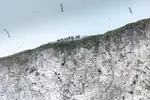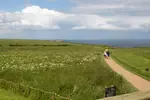- Home
- Nature Walks East of England
- East Yorkshire
Nature on the East Yorkshire Coast
There’s a powerful call that pulls us to the East Yorkshire coast. It’s a desire for the wide-open space and the drama of the cliffs, a place I love to capture through my camera lens.
In his twenties, my husband took on epic treks like the Pennine Way and the Coast to Coast walk. Our adventures look a little different these days.
We’ve learned to seek out the most rewarding experiences without needing to walk for miles.
This isn't about limitation; it's about focus.
It’s about finding the most soul-stirring views and wildlife encounters that are accessible to everyone who wants to look.
This is our guide to savouring the very best of the coast, from the shifting sands of Spurn to the seabird cities of Bempton, one manageable, magnificent walk at a time.
Spurn Point - A Walk on the Edge of the World
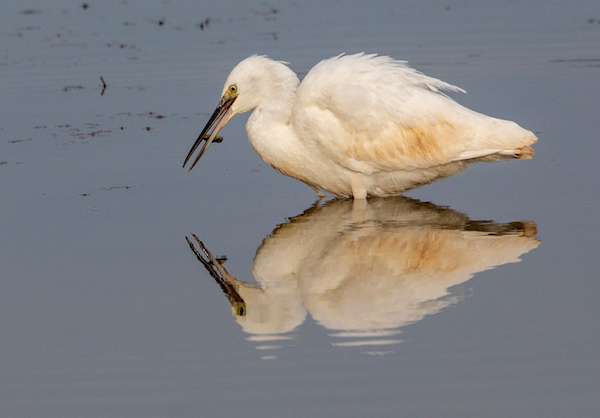 Egret behind the visitor centre, Spurn Point
Egret behind the visitor centre, Spurn PointSpurn Point is a place that feels like it’s at the very edge of everything.
It’s a shifting finger of sand separating the powerful North Sea from the wide Humber estuary.
For our visit, we stayed in the village of Easington.
I was surprised to see a police car pass by regularly, a constant presence in such a quiet place. After a week there, we were on nodding terms with the drivers, feeling reassured by their security circuits ensuring all was well.
It turns out this is all because of the nearby gas terminal. It’s a small detail, but it reminds you that this coastline is a real, working place.
If you are planning a trip, staying in a village like Easington or Kilnsea is a good choice. It gives you a practical base for an early start.
Being just a few minutes' drive away, meant we had the opportuinty for sunrise photos without a terrifically early start.
We soon realised, however, that this ambition was less about the alarm clock and more about the tide tables. To walk the seven miles to the point and back safely, your entire schedule must be planned around the tides.
If you don't feel up for the full walk, you don't have to miss out. There are shorter, equally rewarding walks around Kilnsea and the visitor centre. Its possible to get a real feel for the place withough committing to the long trek.
Do pay heed to the signs warning you of coastal erosion. The cliffs here are fragile, and staying away from the edge ensures you can come back and enjoy this wild stretch of coast again and again.
Flamborough Head
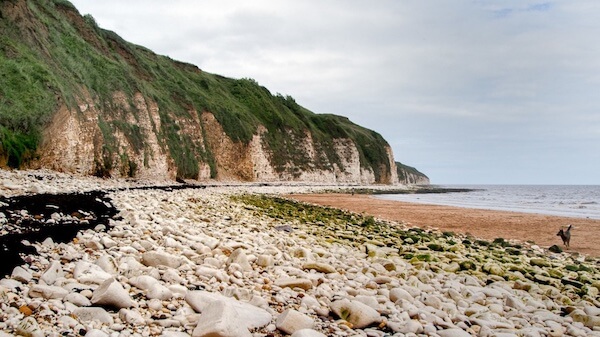 Danes Dyke beach, around the corner from Flamborough Head
Danes Dyke beach, around the corner from Flamborough HeadFurther north, the coastline transforms and the chalk cliffs of Flamborough Head rise from the sea. The first time we visited, the sheer whiteness of the cliffs against the water made me gasp. It had a different character from the low-lying sands of Spurn. Harsher. More imposing.
Flamborough is famous for its two lighthouses, which people call the old and the new, even though the 'new' one has been watching over the coast since 1806!
The eroded cliff arches draw many to explore, but my husband reminded me that if we went down there, we would have to climb back up.
Maybe if we were younger we would have attempted it. But I could just imagine how breathless I would have been before getting back to the top, so we refrained.
We found we could make the most of the panoramic views from up high, the perfect spot to sit awhile and watch the waves crash against the cliffs.
Add in a flask of tea and the fresh salty air, what more could you want at our age?
From here, on a clear day, you can look out across the great sweep of Bridlington Bay. It proves that the most rewarding view isn’t always the one that’s hardest to reach. Sometimes, it’s the one you can sit and savour.
Bempton Cliffs
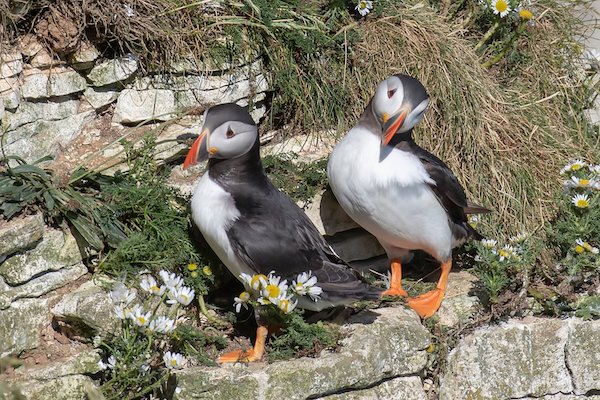
Just up the coast from Flamborough is Bempton Cliffs, an experience that fills every sense. We were first pointed here by a friend who knew I was desperate to see puffins. He gave us some great advice: "Don't risk booking a boat trip that gets cancelled by bad weather. At Bempton, you're guaranteed to see them from the cliffs."
He was absolutely right.
You can, of course, book a boat trip from Bridlington to see the cliffs from the water, and it is a spectacular sight.
However, here’s another piece of advice born from personal experience: if you have even a slight fear of heights, do the cliff-top walk first. Looking up from a boat at those towering 400-foot cliffs and knowing you'll be standing at the top later can be unnerving!
The viewpoints on the cliff tops are safe and accessible.
One of the best things we discovered is that you don't need a huge professional lens to get rewarding photos.
Some of the gannets nest so close to the viewing platforms that my big telephoto lens felt like overkill! The puffins are a different story.
They tend to hide in the crevices further down the cliffs, and for a good shot of them, you will certainly want that longer lens.
We like to visit in June, but the cliffs are covered in over half a million seabirds from March to September. It was astonishing just how MUCH noise that many birds can make. And that smell!
The RSPB visitor centre is a great place to start your visit. Afterwards, you can enjoy your luch at one of the picnic tables. Just be sure to watch out for two kinds of birds: the lovely little Tree Sparrows with their distinct black cheek spots, and the cunning Jackdaws, who will happily steal your sandwich the second you turn your back!
Revisiting these places in my mind makes me want to pack the car and head straight back to the coast.
It reminds me that a love for nature isn't measured in miles walked, but in moments of connection.
The East Yorkshire coast has a wild heart, and you don’t need to be an endurance hiker to experience it. You just need to know where to look.

About the Author
I’m a wildlife photographer who learns on everyday walks. This site is my field notebook: practical photo tips, gentle ID help, and walk ideas to help you see more—wherever you are.
Step Behind the Wild Lens
Seasonal field notes from my wildlife walks: recent encounters, the story behind favourite photos, and simple, practical tips you can use on your next outing.
